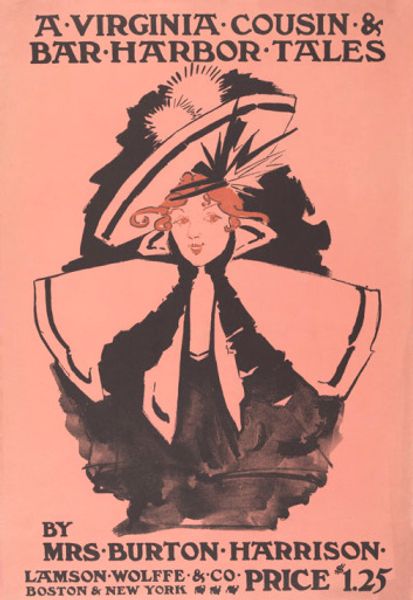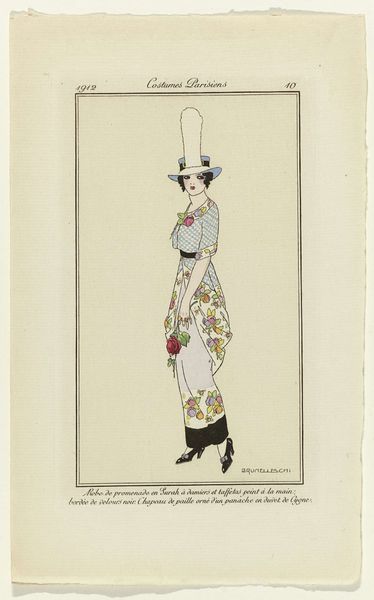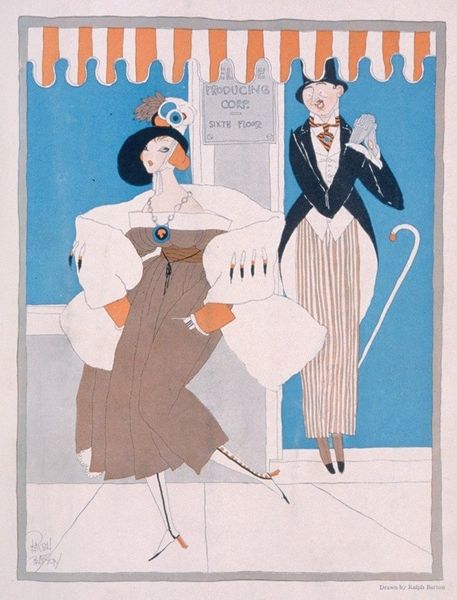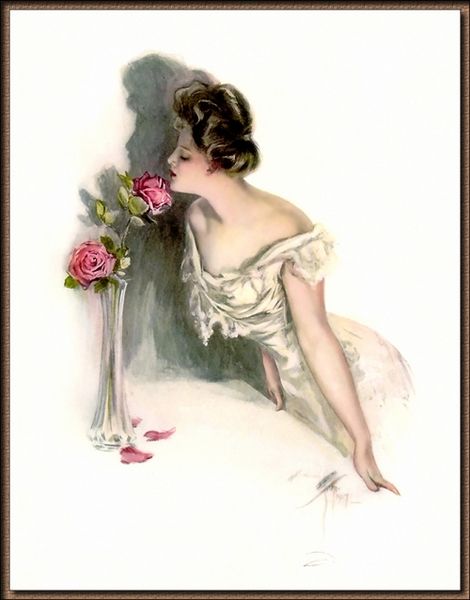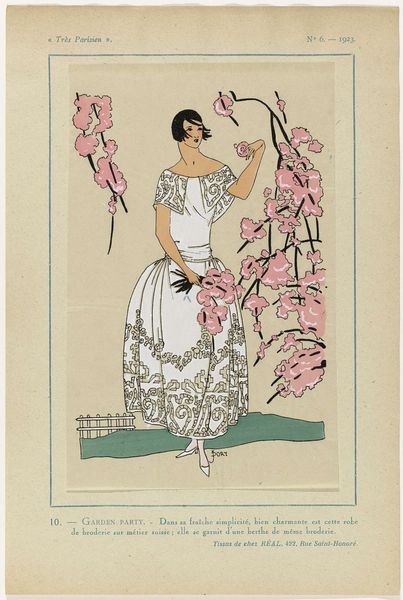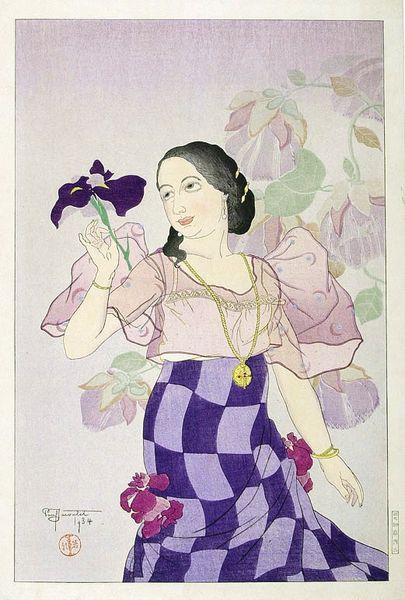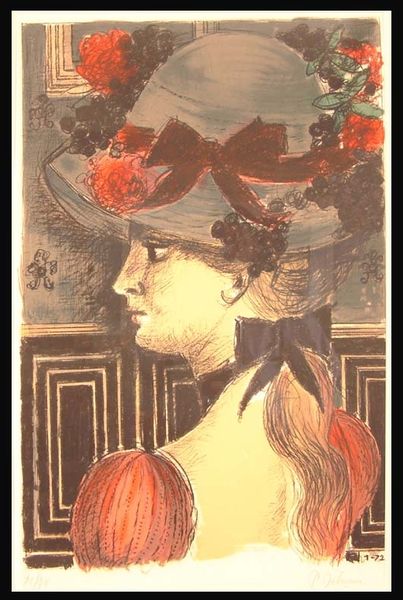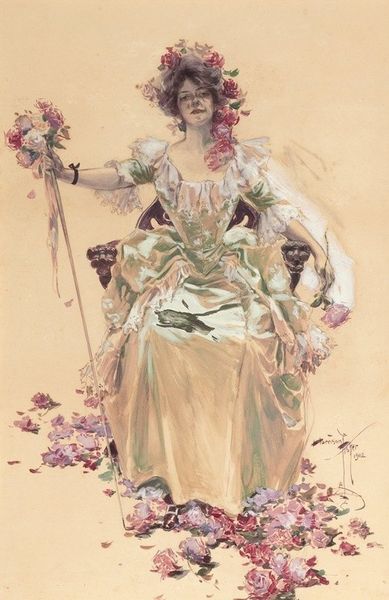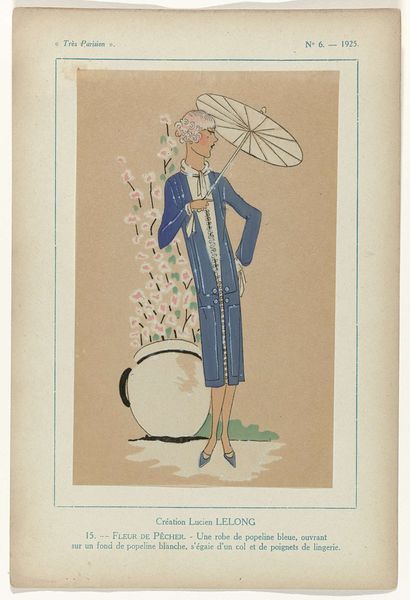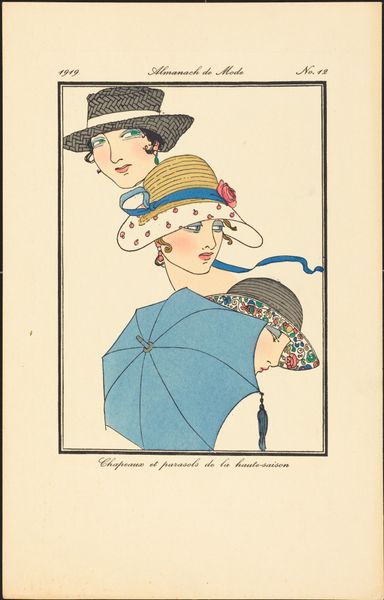
painting, watercolor
#
portrait
#
art-deco
#
painting
#
caricature
#
watercolor
#
surrealism
#
watercolor
Dimensions: height 321 mm, width 230 mm
Copyright: Rijks Museum: Open Domain
Curator: Ah, this artwork has such a whimsical, slightly decadent charm. It’s "Vogue mai 1939: Pomone", created anonymously in 1939. It's a watercolor painting, clearly channeling an art-deco aesthetic for the magazine. Editor: My initial impression is 'celebratory dreamscape'. The almost cartoonish heads adorned with fruits; it's surreal and light, but carries a hint of playful irony about the artifice of fashion. What's the story behind Pomone? Curator: Pomona, of course, is the Roman goddess of fruitful abundance. She oversees orchards and gardens. And the visual language taps directly into that sense of natural yet cultivated beauty – think elaborate hats as symbolic gardens, each bloom or berry deliberately placed. It echoes deeper archetypes of feminine fertility. Editor: Absolutely. These hats aren't just hats; they're like miniature cornucopias. The way the anonymous artist plays with proportion – those oversized apples and strawberries – evokes both abundance and a touch of the surreal. The hats could also reference, I suppose, Marie Antoinette and other depictions of upper-class women of that era wearing items they’d collected on their estates, as statements about their status. It's an interesting dialogue between nature and manufactured desire. Curator: Desire and the visual language of advertising, for sure! Watercolor is perfect for this: light, fluid, capturing fleeting impressions of the latest style. The facelessness of the models adds to the feeling that we're gazing at representations of ideals, not actual individuals. Almost, like it's the fruits of her beauty that are to be coveted and consumed. Editor: Exactly. There’s something quietly unsettling, I find, in the objectification—where identity is submerged beneath layers of artifice and cultural symbolism. The 'Suzy' signature on both faces too... Is that the designer's name stamped almost like branding? It adds another dimension. Curator: Likely the milliner the design references. Well, it's a delightful, multifaceted piece. It speaks volumes about fashion, identity, and our complicated relationship with the natural world. Editor: A testament to how deeply symbols and imagery can shape our desires. Looking at it now, it makes me think of our relationship with natural, sustainable objects and the need to have better intentioned access and respect for those objects.
Comments
No comments
Be the first to comment and join the conversation on the ultimate creative platform.
